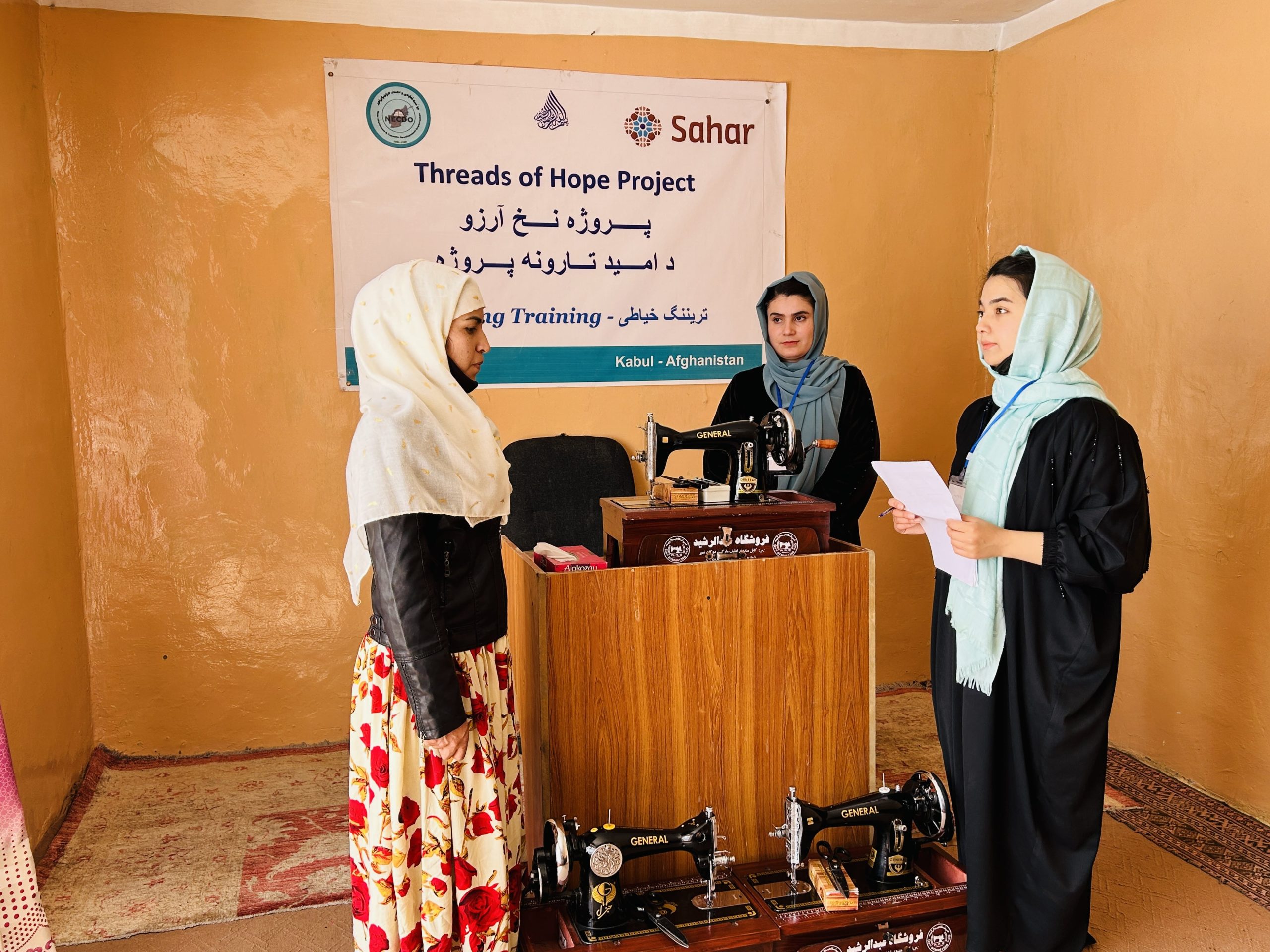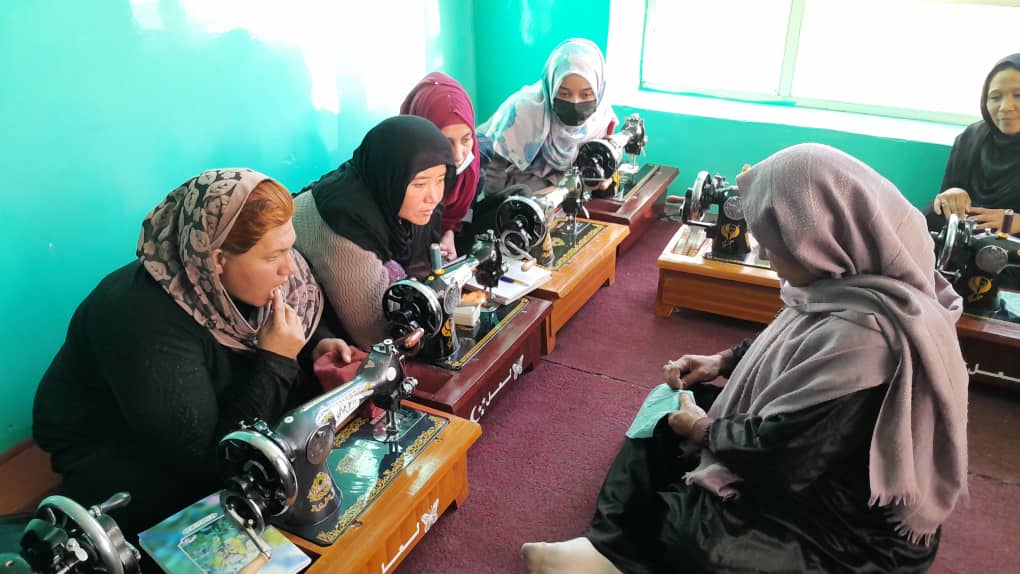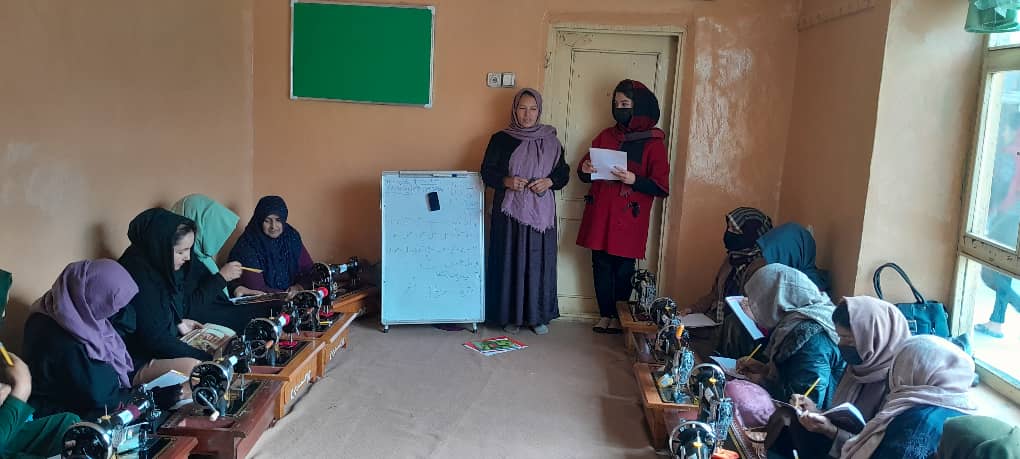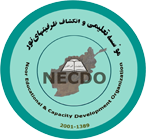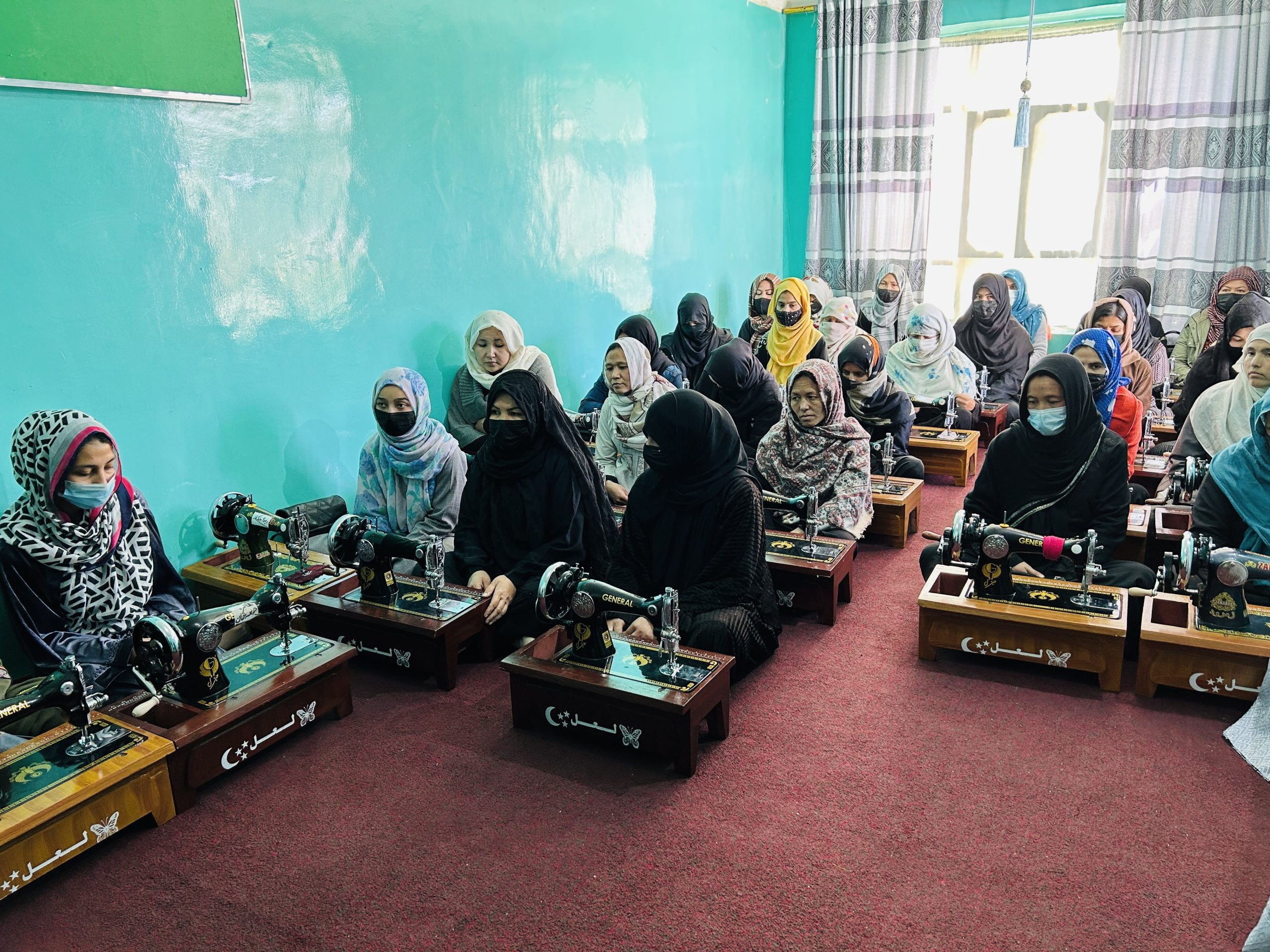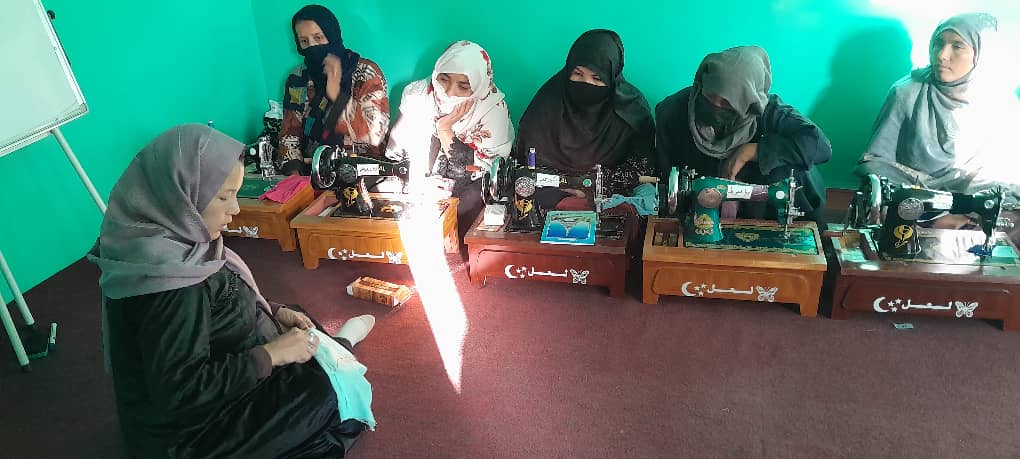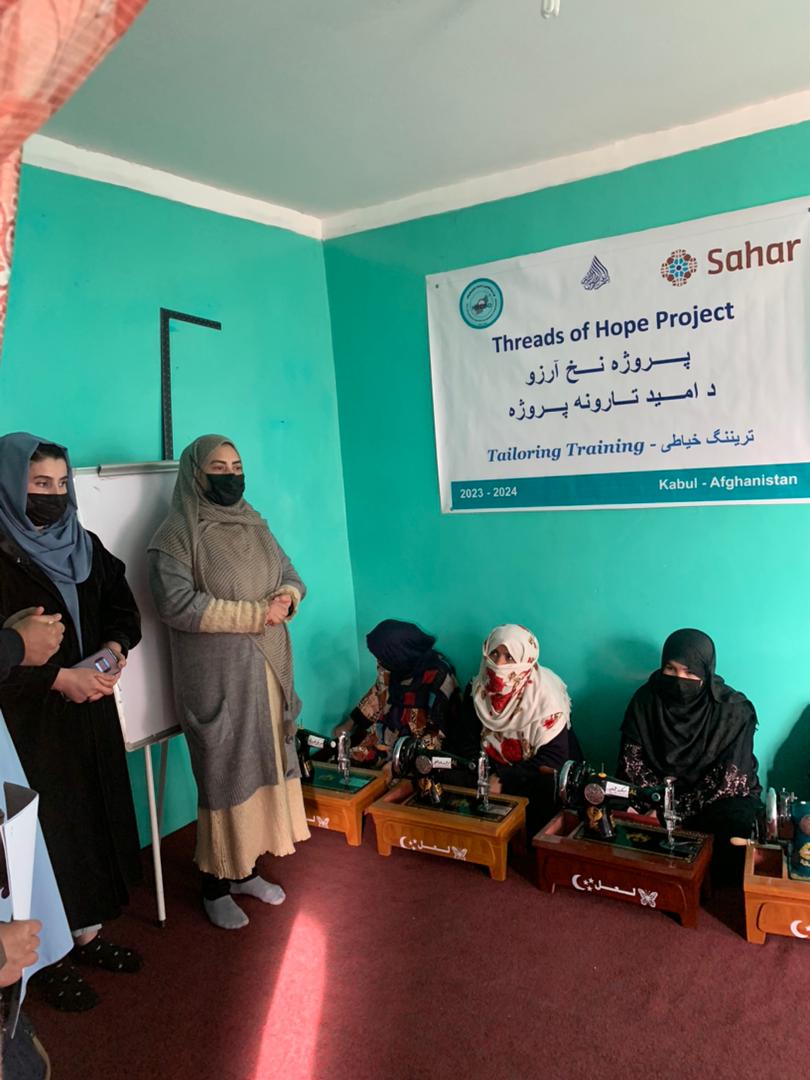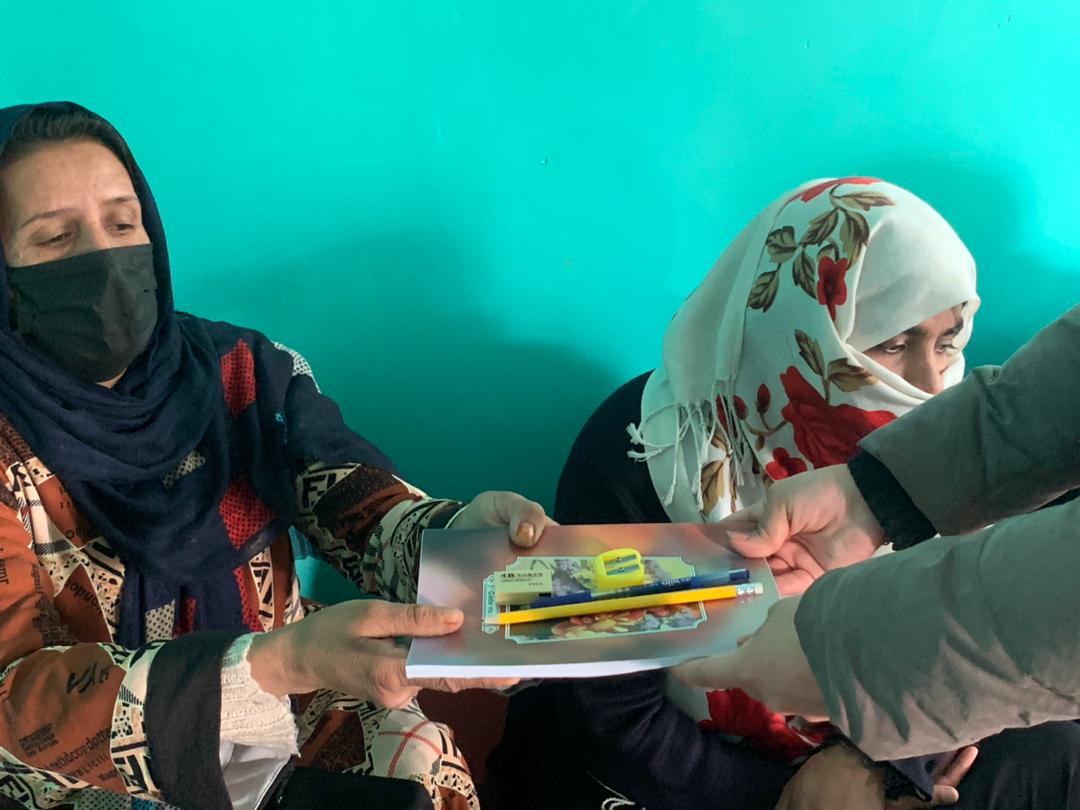Threads of Hope (ToH) Project
The Threads of Hope (ToH) Project was initiated by the Noor Educational & Capacity Development Organization (NECDO) with technical support from SAHAR EDUCATION. This project aimed to empower 40 economically disadvantaged and illiterate women from various provinces by providing comprehensive training in literacy and tailoring, along with health education and awareness of women’s rights.
The project’s duration was six months, spanning from October 2023 to April 2024. It was meticulously planned and executed to address the multifaceted needs of the beneficiaries, who were selected based on strict vulnerability criteria. The overarching goal was to enable these women to become self-sufficient, economically independent, and more informed about their rights and health.
Through rigorous planning and implementation, the project provided a structured curriculum covering basic literacy, vocational skills in tailoring, health education, and women’s empowerment. Each participant not only learned how to read, write, and perform basic arithmetic but also acquired practical tailoring skills that could be used to start small businesses. Health education sessions focused on personal, mental, and reproductive health, while women’s rights workshops aimed to boost their confidence, advocacy skills and their awareness about women rights.
The project outcomes were significant. All 40 women completed the training, and many began applying their new skills immediately. The project also fostered a sense of community among the participants, who supported each other throughout the process. Regular monitoring and evaluation ensured that the project stayed on track and achieved its intended goals.
This report provides a detailed overview of the project’s implementation, outcomes, and impact. It includes narratives on the project’s background, objectives, design, methodology, timeline, beneficiary selection, curriculum, activities, monitoring and evaluation, challenges, success stories, financial report, sustainability plans, lessons learned, and recommendations. The comprehensive approach adopted by the Threads of Hope project serves as a model for similar initiatives aimed at empowering disadvantaged communities through education and vocational training.
Objectives:
The Threads of Hope project was designed with several key objectives in mind. These objectives were aligned with the broader goals of empowering women, improving their economic prospects, and enhancing their overall well-being. These objectives were designed to be interrelated and mutually reinforcing. Literacy skills facilitated the acquisition of vocational skills, health education supported the participants’ overall well-being and awareness, and knowledge of women’s rights enhanced their confidence and ability to advocate for them and become aware about their basic rights as a woman, so they become able to delete the misconceptions and wrong taboos which destroyed and harmed lives of many girls and women in the country. By addressing these different aspects of the beneficiaries’ lives and needs, the project aimed to create a holistic and sustainable impact.
1. To Provide Literacy Education: One of the main goals was to equip 40 economically disadvantaged and illiterate women with basic literacy skills. This included teaching them how to read, write, and perform basic arithmetic. Literacy is a foundational skill that opens up numerous opportunities for personal and professional growth, and it was crucial for enabling the beneficiaries to access further training and information and to enable them to solve their basic problems related to literacy by themselves independently.
2. To Equip Women with Tailoring Skills: The project aimed to provide vocational training in tailoring, enabling the women to acquire practical skills that could be used to generate income. This training covered various aspects of garment creation, including cutting, sewing, and finishing techniques. By the end of the program, the participants were expected to be able to create garments independently and potentially start their own tailoring businesses.
3. To Enhance Health Awareness: Health education was an integral part of the project. The objective was to improve the beneficiaries’ knowledge of personal, mental, and reproductive health. This included training on hygiene practices, mental health awareness, and reproductive health education. The goal was to empower the women to make informed decisions about their health and well-being, thereby improving their quality of life.
4. To Educate Women about Their Rights: Women’s rights education was another critical component of the project. The objective was to raise awareness about legal rights, gender equality, and women’s empowerment. Through workshops and interactive sessions, the participants were educated on their rights and encouraged to advocate for their basic rights. This aspect of the training aimed to boost their confidence and equip them with the knowledge to challenge societal norms and struggle against violence and discrimination in the society.
5. To Foster Economic Independence: Ultimately, the project aimed to enable the beneficiaries to achieve economic independence. By providing them with both literacy and vocational skills, the project sought to create opportunities for the women to start their own businesses or secure employment. Economic independence is a key factor in reducing vulnerability and enhancing the overall empowerment of women.
